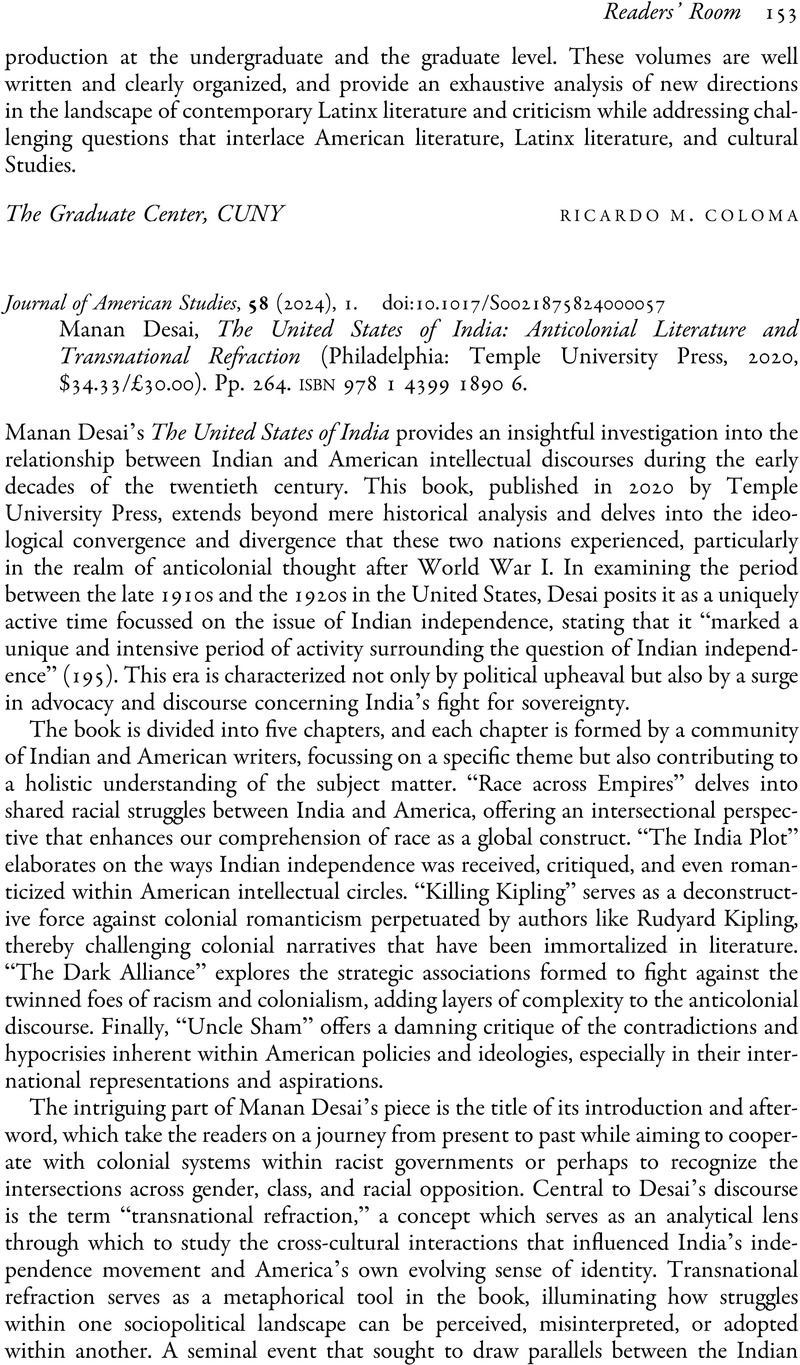No CrossRef data available.
Article contents
Manan Desai, The United States of India: Anticolonial Literature and Transnational Refraction (Philadelphia: Temple University Press, 2020, $34.33/£30.00). Pp. 264. isbn 978 1 4399 1890 6.
Review products
Published online by Cambridge University Press: 07 May 2024
Abstract

- Type
- Readers' Room
- Information
- Copyright
- Copyright © The Author(s), 2024. Published by Cambridge University Press in association with British Association for American Studies
References
1 The term “double-consciousness” was first used by W. E. B. Du Bois in The Souls of Black Folk (1903). It refers to a source of internal “twoness” that was originally thought to be experienced by African Americans because of their racialized oppression and devaluation in a white-dominated society.



